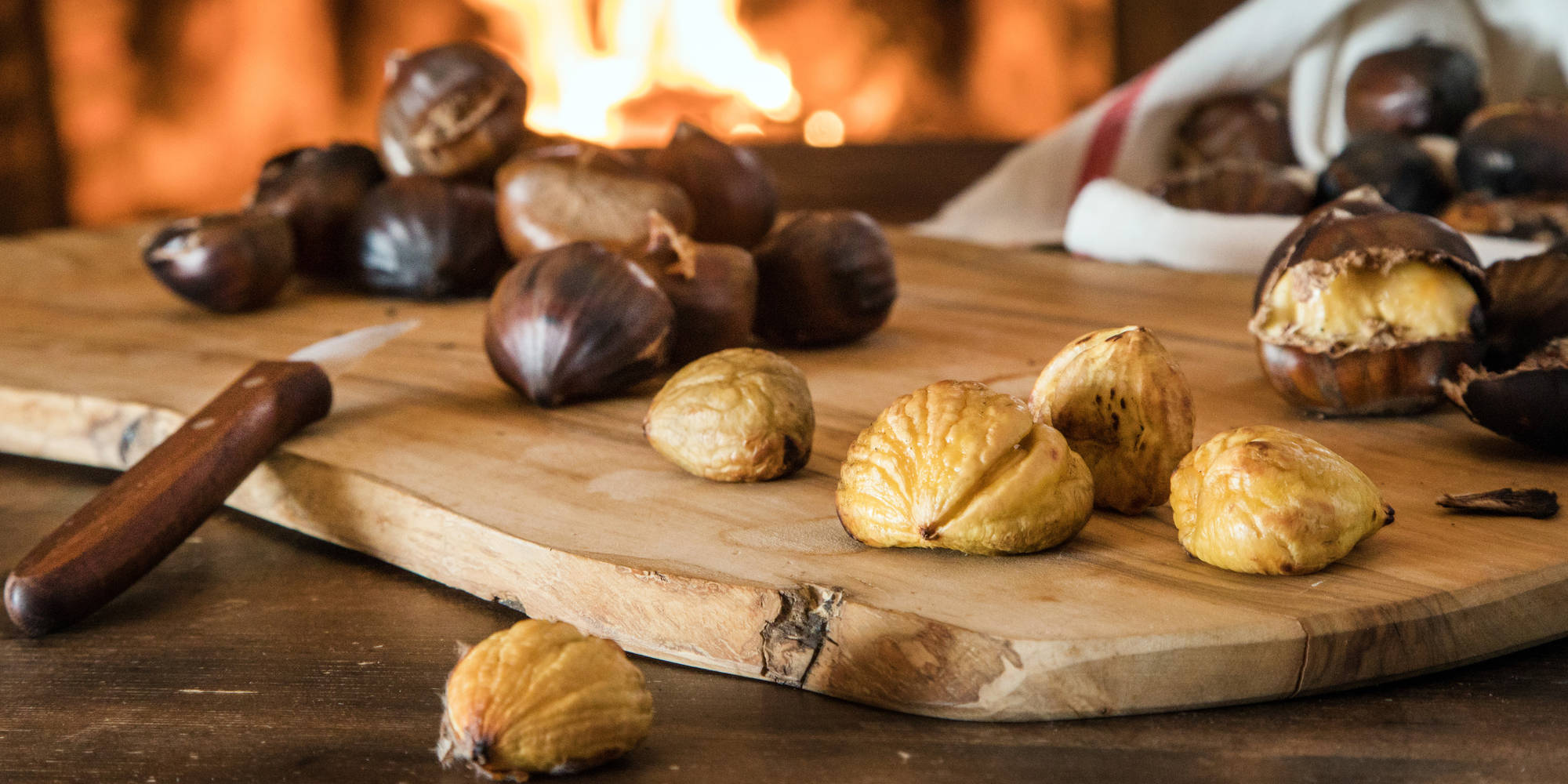Chestnuts roasting on an open fire: how chemistry is helping to restore an American Christmas tradition
By Jillian Jastrzembski
You’ve definitely heard the line about chestnuts roasting on an open fire. But unless you’re over the age of 80, you’ve probably never had the experience. That’s because the American chestnut, which used to be a holiday staple, was almost completely wiped out by a fungus between 1904 and 1945. Today, the lyrics of The Christmas Song are one of the last remaining relics of the once beloved American chestnut.
If you’ve tried a chestnut recently, chances are it was a Chinese or Japanese chestnut. These chestnuts varieties, not native to North America, have a distinctly different flavor profile – nothing like the lost American chestnut. They also have a resistance to the fungus that killed off the American chestnut.
Bringing back the American chestnut would be a sort of Christmas miracle. Not just because it would restore a lost holiday tradition, but because it could help to restore some biodiversity to forests in North America. The American chestnut tree was wiped out before modern forest research was a thing, but we can only assume that it played an essential role in the local ecosystem.
One way researchers are bringing back the American chestnut is through backcross breeding programs. These programs are set up to crossbreed the American chestnut with fungus-resistant species like the Chinese chestnut. The ultimate goal is a chestnut that has the flavor characteristics of the beloved American chestnut, but the disease resistance of the Chinese variety.
In this article, we’ll learn how chemistry is playing an important role in this Christmas miracle.
The flavor of Christmas
If you think you don’t even like chestnuts, it might be that your taste buds are holding out for the obsolete flavor of the American variety. American chestnuts were known for being the sweetest and nuttiest of the varieties, unlike the starchy potato-like European type.
Bringing back the American chestnut means bringing back the lost Christmas-y flavors and aromas we still sing about to this day. In order to assess whether the cross-bred American-Chinese chestnut varieties are adequate replica of the American chestnut, we need a reliable way of assessing the sensory properties.
But do you know what’s expensive, time-consuming, and still really hard to get right? Sensory panels. Panelists need to be trained, paid, and they need long breaks to avoid flavor fatigue. And we need a lot of them to help eliminate all of the subjective bias that goes into sensory tests.
A better option relies on analytical chemistry as an objective flavor assessment. If we know which flavor compounds are essential to the flavor of the American chestnut (and which are not), then we can quickly and reliably test cross-bred chestnuts to see if they fit the bill.
Chemists typically accomplish this by using an extraction technique called solid-phase microextraction, or SPME, in which flavor molecules are absorbed from a sample headspace onto a solid sorbent material. The SPME fiber is then inserted into a heated injection port, and the analytes are sent through a gas chromatograph, which separates the molecules before they are detected by a mass spectrometer. This process is known altogether as SPME-GC-MS, and is considered the gold standard of analytical flavor chemistry.
Insights on the chemical flavor profiles of different chestnuts are still limited, but as a starting point researchers can pull together analytical “fingerprints” of flavor molecules. Instead of identifying and quantifying the hundreds of volatile compounds that are present in chestnuts, they take a bird’s eye view that shows them the relative concentrations of flavor compounds that may or may not be unequivocally identified. This can help them to narrow down which compounds are the most important, so they know where to focus future studies.
In defense of Christmas
Remember that the whole reason for cross-breeding the American chestnut with Chinese varieties is to give the American chestnut a defense against the fungus that wiped it out in the first place.
The old way of testing how well new cross-breeds can defend themselves is to inoculate plantations with the harmful pathogen. A faster, more efficient way is to look at plant defense chemistry.
One way that plants defend themselves is to produce phenolic compounds, a kind of secondary metabolite. Phenolic compounds contain one or more phenolic rings with hydroxyl groups, including compounds like flavonoids, tannins, curcuminoids, lignans, and quinones. These compounds can be toxic to potential invaders.
One way for researchers to assess if their American-Chinese crossbreeds are on the right track is to look at the profile of phenolic compounds. Chemists can accomplish by using methods with GC-MS – although they’ll have to change the instrument method and the extraction technique to look at these different types of compounds. Another option is to use LC-MS instead, a similar technique based on liquid phase separation.
Several phenolic metabolites from the Chinese species have been shown to have antifungal properties. Importantly, many of these important compounds are missing in the American varieties.
Bringing back an American Christmas tradition
Chestnuts are perhaps the Christmas tradition you didn’t even know you were missing. The American chestnut was once synonymous with yuletide celebrations. Thanks to science, we might be able to restore this long-lost tradition.
< Back



